Central Mongolia Birding Tour
 16-30th June 2025: Central Mongolia birding tour highlights include Henderson’s Ground Jay, White-naped Crane, Oriental Plover, Mongolian Lark, Azure Tit, Swan Goose, Siberian Rubythroat, Black-billed Capercaillie, Altai Snowcock, Amur Falcon, Pallas’s Sandgrouse, Himalayan Griffon, Mongolian Accentor, Saxaul Sparrow, Upland Buzzard, Godlewski’s Bunting, – £TBA
16-30th June 2025: Central Mongolia birding tour highlights include Henderson’s Ground Jay, White-naped Crane, Oriental Plover, Mongolian Lark, Azure Tit, Swan Goose, Siberian Rubythroat, Black-billed Capercaillie, Altai Snowcock, Amur Falcon, Pallas’s Sandgrouse, Himalayan Griffon, Mongolian Accentor, Saxaul Sparrow, Upland Buzzard, Godlewski’s Bunting, – £TBA
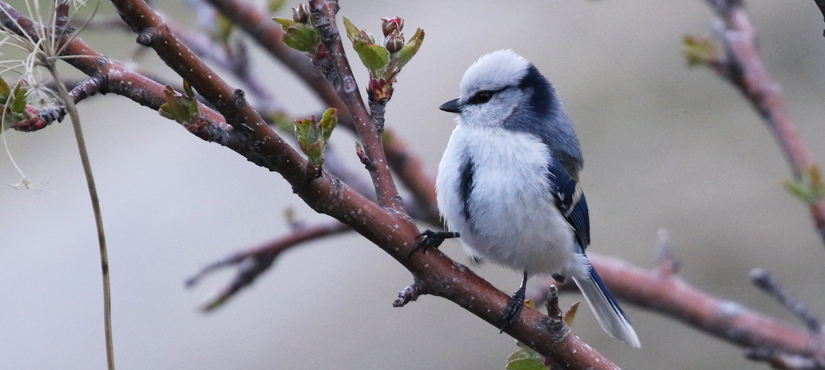
Trip Details
- Dates: 16th – 30th June 2025
- Cost: TBA
- Single Supplement: £650
- Deposit: £550
- Tour length: 15 Days (13 days birding)
- Min/Max group size: 5 / 10
- Start/Finish: Ulaanbataar
- Tour Type: Birding
- Photo Opps: Good
- Physical Classification: Fairly Easy
- Leaders: Nick Upton & Local Guides
If you have any questions about this trip please feel free to ask by contacting us at info@calidrisbirdingtours.com
Central Mongolia Birding
It is not every day that there is the opportunity to go birding in a country that is almost entirely undeveloped, consisting of some of the largest open spaces in the world. Mile after mile of steppe, grazed by the herds of the nomads for centuries, amazing expanses of wetlands popping up in any habitat type, rolling, open taiga on the northern hills and dry, thorny scrublands against the backdrop of enormous sand dunes and the Altai mountains. Birding in Mongolia is a real adventure and a throwback to days gone by.
Mongolia has characteristics of Central and Eastern Asia as well as Europe, making for a diverse and interesting avifauna that include key Central Asian species, rare European breeders and exciting East Asian migrants. The numbers and variety of birds is a surprising strength of this trip but those key Mongolian birds are the ones that will form the focus of our attention whether birding in steppe, wetlands, taiga, mountains or desert. In such a wild and untamed land travel and accommodation can provide a logistical challenge but comfortable ger camps will form the bulk of our accommodation and sites that require the minimum of travel have been selected so that we can enjoy being immersed in the landscape with the most comfort and convenience that can be provided.
For birders who like to see birds on their breeding grounds, in full song and activity then this tour ticks those boxes. Seeing shy species such as Chinese Bush Warbler performing and Siberian Rubythroat in full song is a rare treat for most birders while locating species such as Black-billed Capercaillie, Stejneger’s Scoter, Mongolian Lark, White-naped Crane, Henderson’s Ground Jay, Altai Snowcock and Azure Tit should stick long in the memory. For those that enjoy an identification challenge and to learn about a difficult group of birds there will be a good selection of singing Phylloscopus warblers to get to grips with. Any birders who love raptors will not be disappointed in Mongolia with Saker Falcon, Steppe Eagle, Amur Falcon, Cinereous Vulture and Lammergeier just a few of the species we can look forward to. Add amazing scenery, a supporting cast of finches, wildfowl and woodpeckers and it is clear that this is a birding tour to be excited about.
Day 1, Arrival – 16th June 2025
Arrival in Ulanbataar, the capital city of Mongolia. You will arrive at Chinggis Khaan International Airport and transfer a short distance to a comfortable hotel to get a good night’s sleep before this Central Mongolia birding tour birding starts.
Day 2, Tuul River – 17th June 2025
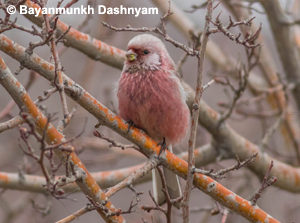
After breakfast a short drive from our hotel takes us to the Tuul River on the outskirts of Ulanbataar. Although we will drive through areas of construction and urban sprawl we will start our birding in an area of riverine habitats that include farmland, willow scrub, pools, streams and, of course, the river itself. This mosaic of habitats will give us a nice first taste of birding in Mongolia and should provide us with good views of a much-wanted bird in the form of the cute little Azure Tit. This is a superb little bird to start the tour with.
A nice selection of Eurasian species occur here with some of the commoner birds being the smart Daurian Jackdaw, Black-eared Kite, White Wagtail, Goosander and Red-billed Chough. However, we will search the reeds and willows for some highly sought-after birds including the lovely White-capped Penduline Tit and Long-tailed Rosefinch. These two little beauties will be our main focus along with Azure Tit here but we will not ignore other regional specialities such as Azure-winged Magpie, White-cheeked Starling and Red-throated Thrush.

The river and pools will hold some birds of interest too with wildfowl including Whooper Swan, Chinese Spot-billed Duck, Mandarin Duck, Ruddy Shelduck and our first chance of seeing Swan Goose. We will enjoy some relaxed birding here with species as diverse as Pacific Swift, Great Crested Grebe, Cinereous Vulture and Hawfinch.
After lunch we will make our first journey into the famous steppes of Mongolia. Our two-hour journey will take us into this grassland landscape that extends across much of this largely-undeveloped country towards our ger camp in Delgerkhaan region. The hills, steppe and pools in this area will be the backdrop for our next few days of birding but we will arrive in time to enjoy species such as Pied Wheatear and Steppe Eagle. While travelling between sites there will always be the opportunity to make birding stops as and when we spot something of interest. We are likely to see species like Asian Short-toed Lark and the magnificent Saker Falcon along the way and everyone is sure to be excited when we see our first Mongolian Lark. Although it will be much-anticipated this species is going to become quite familiar over the next few days.
Days 3-4, Terelj National Park – 18-19th June2025

We relocate to Gorkhi-Terelj National Park, exchanging wetlands and steppe for hills and boreal woodland, otherwise known as taiga. Along the way we will pass the enormous Chinggis Khaan memorial statue, so we will make a short stop and take a few photos of this enormous edifice. Making this change of habitat of course means that we can expect a good number of new bird species and, indeed, there are some real specialities to look for here. There are a few game birds awaiting us including Daurian Partridge, which is quite common here, along with Hazel Grouse and Black Grouse. However, our focus will be very much on finding the impressive Black-billed Capercaillie. This massive beast is not easy to locate but if we put in the effort, and cover a lot of ground on foot, we should be in luck. This impressive bird should be a real highlight of this Central Mongolia birding tour.

Looking for these exciting species will put us in the right habitat for a lot of other birds, including many East Asian migrants that sometimes turn up in Europe. The trees should be alive with the songs of several species of Phylloscopus warblers including the smart Pallas’s Leaf Warbler and the more sombre-looking Hume’s Leaf Warbler with its peculiar song. Add to this Yellow-browed Warbler, Dusky Warbler, Arctic Warbler and Two-barred Warbler and you have a real collection of these difficult-to-identify birds. At this time of the year they will be in song, though, which will make things easier. On its wintering grounds Chinese Bush Warbler is almost impossible to see but when it is breeding it will sit up and sing for us, allowing us to study this difficult species. Wet areas will hold vegetation that is used by Paddyfield Warbler and Oriental Reed Warbler.
Some exciting Woodpeckers are in store for us here too. Massive Black Woodpecker will be found flying from tree to tree while the drumming of Eurasian Three-toed Woodpecker will alert us to its presence. There should also be White-backed Woodpecker for us to enjoy as well as both Lesser and Greater Spotted Woodpeckers too. This is also where we expect to find another smart little bird in the form of Pine Bunting. Calling from the tops of small trees we should be able to spot this attractive species. Ortolan Bunting and Black-faced Bunting will also entertain us while raptors here include Northern Goshawk.
Days 5-6, Murun – 20-21st June 2025
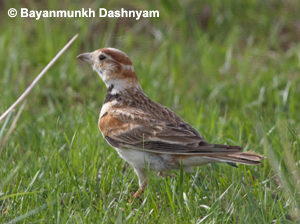
Two days in this area will give us plenty of time to enjoy not only the birds but also the sense of being out in such an open landscape as Mongolia provides. We will see Isabelline Wheatears around the camp along with Asian Short-toed Lark while we might expect species that include Saker Falcon and Steppe Eagle overhead. Birding in the wetland areas we will see many of the wildfowl species that will become familiar to us which should include Swan Goose, Black Stork and elegant Demoiselle Cranes.
Superb White-winged Terns in breeding plumage occur in wetlands too along with a variety of migrating shorebirds. We have a chance to find Japanese Quail in surrounding grasslands, although birds such as this are never simple to observe and will require some effort and a little luck. The steppe habitat should give us plenty of opportunity to watch the smart Mongolian Lark while Richard’s Pipit alongside Blyth’s Pipit will give us something to test our identification skills with. Knowing the call will make things simpler!
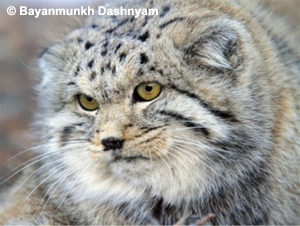
Traveling in Mongolia will provide us with some fantastic landscapes and birds but also we should see quite a lot of small mammals too. One of the most exciting mammals of the trip occurs in this area and we will have expert trackers to help us look for Pallas’s Cat! Other mammals should include Daurian Pika and Long-tailed Ground Squirrel but it is likely that we will divert our attention to the Upland Buzzards that hunt them!
For those who enjoy owls there is a very good chance to see Eurasian Eagle Owl here, always a majestic bird to see, as well as Little Owl and Long-eared Owl. Pied Wheatear should be easy to find in some of the rocky areas with Common Rockthrush perched out on a favourite point. Eurasian Rock Sparrow is another bird to look out for while Pere David’s Snowfinch is another one of the key targets we should be able to find in this area. This species may not look very special but its world range is almost entirely restricted to Mongolia.
There should be plenty of raptors here for those who love these exciting predators. This is one of the best places for us to see Lammergeier and Saker Falcons will never get dull. Our days birding at Delgerkhaan are a good opportunity to find Greater Spotted Eagle, Golden Eagle, Eastern Imperial Eagle and Cinereous Vulture too. All of these are fantastic birds and it will be really special if we see all of them in just one location.
Days 7-8, Gun Galuut Nature Reserve – Ulaanbaatar – 22nd June 2025
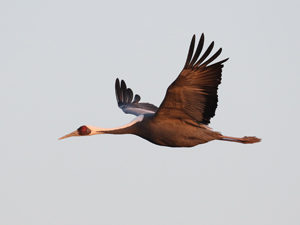
Leaving one ger camp for another a two-hour journey will take us to the beautiful river valleys and lakes of Gun Galuut Nature Reserve, set in the sort of scenery that one expects of the Mongolian wilderness. Our ger camp is right within this spectacular area of hills and wetlands, giving us a great base for exploring the surrounding area.
One of the main reasons for visiting this location is to see White-naped Crane. This is one of the most beautiful of the world’s crane species and it will be something to remember to watch them on their breeding grounds; despite the large number of other species it may be hard to take our eyes off of them. These wetlands play host to lots of other interesting birds too including Black Stork, Eurasian Spoonbill and Demoiselle Crane and we will also be hoping that our luck is in with Siberian Crane. This bird is rare here but we have a fighting chance of finding it.
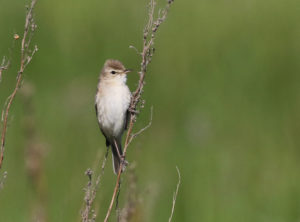
Of course, in a wetland there will be wildfowl and this is an excellent place to photograph Swan Goose and to find Bar-headed Geese on their breeding grounds on the northern side of their trans-himalayan migration. Along with common species such as Common Goldeye, Northern Pintail and Ruddy Shelduck we hope to see Falcated Duck. The stunning males of this species are a real treat but we will also be searching for breeding White-winged Scoter, something to anticipate with excitement.
This location is also the best one on this trip for us to see waders on their breeding grounds. Northern Lapwing is common but always a nice bird as are Pied Avocet and Black-winged Stilt. The top prize for us here though is Asian Dowitcher. This is a rare bird here so we will have to search for this fantastic bird while enjoying species that include Marsh Sandpiper, Kentish Plover and Ruff in all their breeding finery.
Reed beds and emergent vegetation are also of interest to us with cryptic species such as Paddyfield Warbler, Oriental Reed Warbler and Lanceolated Warbler singing away. These reedy areas should also give us the chance to compare dainty Pallas’s Reed Buntings alongside the chunkier Common Reed Bunting as well as hearing their song. Other birds filling the air with their song will include Eurasian Skylark, Citrine Wagtail, Blyth’s Pipit and Isabelline Wheatear. Common Sand Martin and Pale Martin will give us some difficulties in separating them but the Daurian Jackdaws that follow us from Ulanbataar will be easier!
This area gives us another chance at two scarce raptors in the shape of Greater Spotted Eagle and Eastern Imperial Eagle. We can also expect to see Hen Harrier and Eastern Marsh Harrier hunting over the wetlands. This area should provide us with some of the richest birding of the trip with a wide range of species, some of which will be familiar, others of which will be more exotic.
Day 9, Bayanzag – 24th June 2025
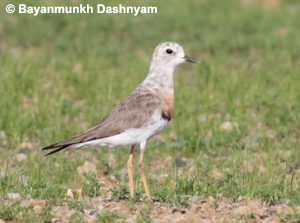
In the morning we will take a flight from Ulanbataar to Dalanzadgad, with a flight time of 1.5 hours, which will cut out many hours of driving on dusty roads. Once here we drive into the Gobi Desert to an area known as Bayanzag, otherwise known as the flaming cliffs. This area of sandstone cliffs and rocky gullies is a hot spot for paleontological finds and while birding here we may even find fragments of dinosaur fossils ourselves. However, there are some exciting birds for us to see here too with Oriental Plover in breeding plumage in the nearby plains at the top of our wish list. Adults in full breeding plumage are stunning and we will spend time obtaining the best views we can of these fabulous birds.
Water emerging at springs should provide us with some nice birds coming to drink including Isabelline Wheatear, Crested Lark, Horned Lark and Desert Wheatear. These will be nice but another star species we came to Mongolia to see should be here too: Pallas’s Sandgrouse. This iconic species can actually be quite numerous in this region and we will be hoping to witness the spectacle of flocks of these birds in flight as well as getting close up encounters with individual birds.
There are plenty more birds for us to find at this location with tiny Asian Desert Warbler hiding in tufts of vegetation in the arid landscape and the predatory Steppe Grey Shrike hunting from exposed perches. This is also a good opportunity for us to add to our raptor list with Long-legged Buzzard inhabiting this area.
Days 10-11, Khongoryn Els – 25-26th June 2025

We can spend some more time with Oriental Plover if we need it before driving into some truly spectacular scenery as we enter the sand dune sector of the Mongolian Gobi Desert. Passing steep sandstone cliffs and through dry steppe our camp faces the massive sand dunes that are often known as the “singing sands”.
Today’s scenery will be matched by the birds and an excursion into the right habitat is where we will encounter Henderson’s (Mongolian) Ground Jay on these days. This curious bird should give us good views as it flits from one small shrub to another. This arid, stony habitat will also give us more opportunities to enjoy Pallas’s Sandgrouse and to look for Steppe Grey Shrike and Asian Desert Warbler. Patches of saxaul scrubland play host to the attractive Saxaul Sparrow a species far smarter than most birders realize.
Days in this area will give us plenty of time to get the views we want, particularly of Pallas’s Sandgrouse and Henderson’s Ground Jay, as well as enjoying raptors overhead that should include Long-legged Buzzard and Lesser Kestrel.
Days 12-13, Yolyn Am – 27-28th June 2025

Departing our camp at Khongoryn Els we move on to yet another habitat and stunning landscape we will spend time in Gurvan Saikhan National Park which covers part of the Gobi-Altai mountain range. This area is famous for its gorge but we will be searching the rocky peaks for a new set of species that includes Altai Snowcock. Scanning the mountainside it is not an easy task to spot these birds and we may need to hike off trail to find them. Along the way we can expect to enjoy species such as Sulphur-bellied Warbler, a Phylloscopus that inhabits low shrubland on hillsides, and cute Mongolian Finches.
In the vegetation among the rocks and crags we will be looking out for lots of interesting birds including White-winged Snowfinch, Common Rosefinch and Grey-necked Bunting. Given the nature of the habitat we will expect Common Rockthrush and Eurasian Crag Martin along the way and to be reunited with Saker Falcon. This is a good place for small, seed-eating finch-like birds and as we should be able to find Beautiful Rosefinch and Godlewski’s Bunting to our lists over the course of our time here.

Other birds we hope to see are Barred Warbler in breeding plumage, Golden Eagle and Chukar Partridge while the wonderful Wallcreeper is always a highlight whenever it is seen. We have a good chance here. It is always true that by visiting a different habitat new birds will be seen and this location brings us into the realm of two Accentors, birds that we will not have encountered previously on this birding trip. Brown Accentor is a nice Central Asian speciality but a bird even more range-restricted is Mongolian (Kozlov’s) Accentor which has a range almost exclusively restricted to Mongolia.
Day 14, Ulanbataar – 29th June 2025
We have breakfast and will then take a flight back to Ulanbataar and then check into our hotel. In the afternoon we hope to have time to revisit the Tuul river to search for any species we may not have seen on our first day. Alternatively we can visit another wetland near the city to see what we can add to our Mongolia bird list. Exactly what we do on this day depends both on what we have seen previously on the tour and on the Dalanzadgad-Ulanbataar flight schedule. This flight schedule is not published until closer to the time.
Our final dinner together will conclude this Central Mongolia birding tour.
Day 15, Departure – 30th June 2025
Transfer from the hotel to Chinggis Khaan International Airport will be provided according to your flight schedule.
The following is a list of species that we have a good chance of seeing on this Central Mongolia birding tour based on the experience of previous visits. This is not a complete list of birds that we will be looking for but they are some of the main highlights based on how memorable or how range-restricted they are. Although we will be looking for all the birds of Mongolia these are many of the highlights that we will be putting our efforts into finding. Of course, these are wild birds and we cannot guarantee that we will see them all although we do expect to find a high proportion of them.
- Black Grouse – Lyrurus tetrix
- Hazel Grouse – Tetrastes bonasia
- Black-billed Capercaillie – Tetrao parvirostris
- Altai Snowcock – Tetraogallus altaicus
- Chukar – Alectoris chukar
- Daurian Partridge – Perdix dauurica
- Japanese Quail – Coturnix japonica
- Bar-headed Goose – Anser indicus
- Swan Goose – Anser cygnoides
- Stejneger’s Scoter – Melanitta stejnegeri
- Falcated Duck – Mareca falcata
- Mandarin Duck – Aix galericulata
- Eastern (Chinese) Spotbilled Duck – Anas zonorhyncha
- Black Stork – Ciconia nigra
- Lammergeier – Gypaetus barbatus
- Himalayan Griffon – Gyps himalayensis
- Cinereous Vulture – Aegypius monachus
- Steppe Eagle – Aquila nipalensis
- Eastern Marsh Harrier – Circus spilonotus
- Long-legged Buzzard – Buteo rufinus
- Upland Buzzard – Buteo hemilasius
- Siberian Crane – Leucogeranus leucogeranus
- White-naped Crane – Antigone vipio
- Demoiselle Crane – Grus virgo
- Oriental Plover – Charadrius veredus
- Asian Dowitcher – Limnodromus semipalmatus
- Pallas’s Sandgrouse – Syrrhaptes paradoxus
- Mongolian Gull – Larus mongolicus
- White-winged Tern – Chlidonias leucopterus
- Hill Pigeon – Columba rupestris
- Oriental Cuckoo – Cuculus optatus
- Ural Owl – Strix uralensis
- Eurasian Eagle Owl – Bubo bubo
- Black Woodpecker – Dryocopus martius
- Lesser Spotted Woodpecker – Dendrocopos minor
- White-backed Woodpecker – Dendrocopos leucotos
- Eurasian Three-toed Woodpecker – Picoides tridactylus
- Lesser Kestrel – Falco naumanni
- Amur Falcon – Falco amurensis
- Saker Falcon – Falco cherrug
- Isabelline Shrike – Lanius isabellinus
- Steppe Grey Shrike – Lanius pallidirostris
- Azure-winged Magpie – Cyanopica cyanus
- Henderson’s Ground Jay – Podoces hendersoni
- Daurian Jackdaw – Corvus dauuricus
- Azure Tit – Cyanistes cyanus
- White-crowned Penduline Tit – Remiz coronatus
- Eurasian Crag Martin – Ptyonoprogne rupestris
- Pale Martin – Riparia diluta
- Asian Short-toed Lark – Alaudala cheleensis
- Mongolian Lark – Melanocorypha mongolica
- Horned Lark – Eremophila alpestris
- Lanceolated Warbler – Locustella lanceolata
- Chinese Bush Warbler – Locustella tacsanowskia
- Paddyfield Warbler – Acrocephalus agricola
- Oriental Reed Warbler – Acrocephalus orientalis
- Hume’s Leaf Warbler – Phylloscopus humei
- Pallas’s Leaf Warbler – Phyllsocopus proregulus
- Sulphur-bellied Warbler – Phylloscopus griseolus
- Arctic Warbler – Phylloscopus borealis
- Asian Desert Warbler – Sylvia nana
- Barred Warbler – Sylvia nisoria
- Wallcreeper – Tichodroma muraria
- Red-throated Thrush – Turdus ruficollis
- Dark-sided Flycatcher – Muscicapa sibirica
- Siberian Rubythroat – Calliope calliope
- Red-flanked Bluetail – Tarsiger cyanurus
- Taiga Flycatcher – Ficedula albicilla
- (Eastern) Black Redstart – Phoenicurus ochruros (phoenicuroides)
- Daurian Redstart – Phoenicurus auroreus
- Pied Wheatear – Oenanthe pleschanka
- Isabelline Wheatear – Oenanthe isabellina
- Desert Wheatear – Oenanthe deserti
- Saxaul Sparrow – Passer ammodendri
- Eurasian Rock Sparrow – Petronia petronia
- White-winged Snowfinch – Montifringilla nivalis
- Pere David’s Snowfinch – Pyrgilauda davidiana
- Brown Accentor – Prunella fulvescens
- Mongolian (Kozlov’s) Accentor – Prunella koslowi
- Hawfinch – Coccothraustes coccothraustes
- Long-tailed Rosefinch – Carpodacus sibiricus
- Beautiful Rosefinch – Carpodacus pulcherrimus
- Mongolian Finch – Eremopsaltria mongolica
- Twite – Linaria flavirostris
- Meadow Bunting – Emberiza cioides
- Godlewski’s Bunting – Emberiza godlewskii
- Grey-necked Bunting – Emberiza buchanani
- Ortolan Bunting – Emberiza hortulana
- Pine Bunting – Emberiza leucocephalos
- Pallas’s Reed Bunting – Schoeniclus pallasi
- Black-faced Bunting – Schoeniclus spodocephala
The map below indicates the main birding locations on this Central Mongolia birding tour. These are the main sites but there will be lots of birding stops between them as we travel.

1. Chinggis Khan International Airport
5. Gorkhi-Terelj National Park
2. Tuul River
6. Bayanzag
3. Delgerkhaan
7. Khongoryn Els
4. Gun Galuut Nature Reserve
Below are a selection of photos of birds that we have a good chance of seeing in Mongolia.

Steppe Eagle 
Saxaul Sparrow 
Lesser Kestrel 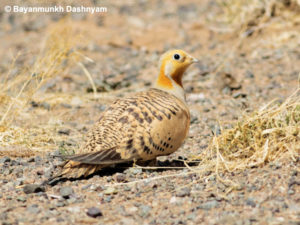
Pallas’s Sandgrouse 
Saker Falcon 
Red-billed Chough 
Pere David’s Snowfinch 
Black-eared Kite 
Bar-headed Goose 
Northern Lapwing 
Swan Goose 
White-winged Tern
All above photographs copyright Nick Upton/Calidris Birding Tours except where otherwise indicated.
Tour Details
Tour Cost: £TBA
Single Supplement: £650
Included in the tour cost: All transportation within Mongolia including airport transfers and two internal flights plus road tolls; all services of expert local bird guides, trackers, drivers, camp staff and Calidris Birding Tours guide; all accommodation, meals and bottled drinking water plus entry fees to national parks and other protected areas.
Not included in the tour cost: International flights, travel insurance, entry visa, alcoholic/soft drinks, laundry, tips, mini bar items, phone calls from hotels or any other items of a personal nature. There are no camera fees expected for any of the areas we are visiting but if the Mongolian government should impose such fees at short notice then these will be at your own cost.
Accommodation: We use 3-4 star hotels in Ulanbataar. For the remaining nights we will stay at ger (the Mongolian word for yurt) camps. These are simple but clean and comfortable, with two to four beds within each one and a stove for heating. There are shared bathrooms and meals are eaten in a communal ger/building. This is the traditional Mongolian nomad’s accommodation and while they do not provide luxury they will provide a good night’s sleep in spectacular locations. We expect to have wifi on nights in Ulanbataar but not at ger camps for most of the tour. Single accommodation is possible but cannot be guaranteed.
Physical effort: This is not a particularly physically demanding tour in terms of walking. However, participants require reasonable level of fitness to be able to go on birding walks of several hours on fairly flat terrain. There will be one or two optional harder walks to locate a couple of target species if we cannot find them more easily. This tour has been designed to require far less travel than many other tours to Mongolia but participants should be able to deal with journeys over rough terrain.
Weather: Sunny but cool weather is normal at this time of year although rain showers are possible at times. After sunset the temperature is likely to drop considerably so that some warm clothing is required. Most of the time the temperature should be pleasant and there should be blue skies. However, participants will need to prepare for both cold and hot weather periods, as well as rain.
Food: Traditional Mongolian cuisine relies heavily on meat but years of catering to tourists means that vegetarian food is available. Vegetarians should notify us in advance so that some ger camps can order supplies in advance. Please notify us in advance if you have any food allergies so that these we can cater for these.
Tour Leaders

Nick Upton
Nick Upton has been birding since the age of seven and leading birding tours full-time since 2007. After travelling extensively in Asia he settled in Thailand in 1997, teaching English and science while establishing thaibirding.com. With a BSc (Hons) Wildlife & Countryside Conservation he is well placed to understand the ecology of birds as well as the conservation issues that affect them.
Nick is co-founder/director of Calidris Birding Tours.
While we will make every effort to adhere to the advertised itinerary, we reserve the right to make changes in the case of unforeseen circumstances that are beyond our control. These include problems with accessibility, flight schedule changes, national park closures, unseasonal weather events or any other reason that may demand an itinerary change.
Recommended Field Guide
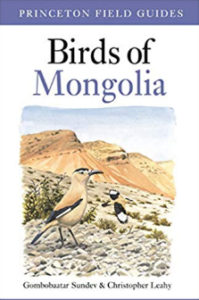 Birds of Mongolia
Birds of Mongolia
Published in 2019 this field guide was a long time in coming for this increasingly popular birding destination. Containing all the species we are likely to see on this Central Mongolia birding tour we highly recommend that all birders joining us on this tour obtain a copy of this field guide. This is the publication the guides will be using on this tour and obtaining a copy in advance of the tour will allow participants to familiarize themselves with the birds we will see in Mongolia.
The checklist that Calidris Birding Tours will issue for this trip will use IOC taxonomy while also referring to the taxonomy used within this field guide so that it is relevant to both.
Read our full review of the book here – Birds of Mongolia.
Terms and conditions: Please read the full Calidris Birding Tours terms and conditions which apply to the Central Mongolia Birding Tour.


